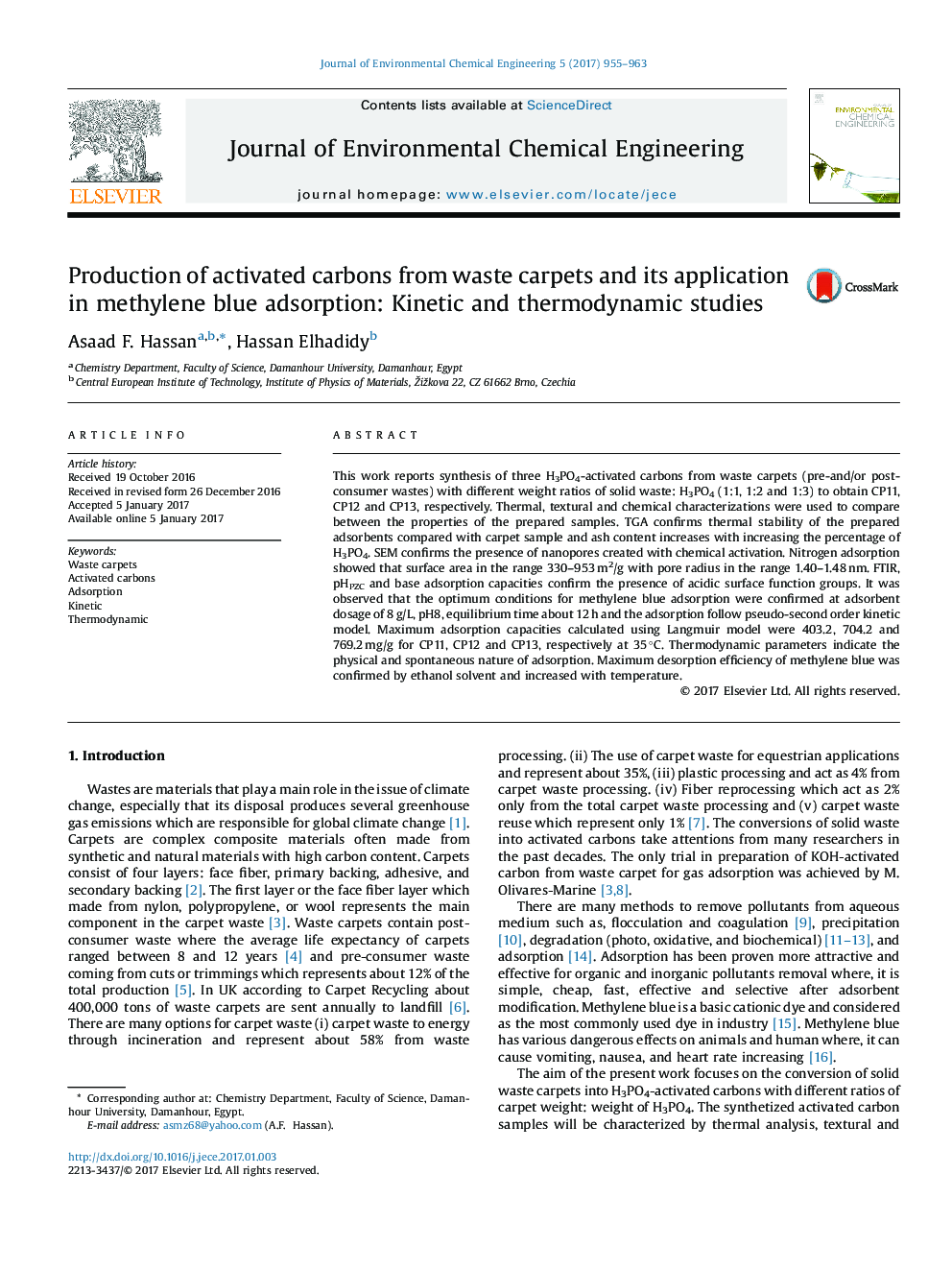| Article ID | Journal | Published Year | Pages | File Type |
|---|---|---|---|---|
| 6477538 | Journal of Environmental Chemical Engineering | 2017 | 9 Pages |
This work reports synthesis of three H3PO4-activated carbons from waste carpets (pre-and/or post-consumer wastes) with different weight ratios of solid waste: H3PO4 (1:1, 1:2 and 1:3) to obtain CP11, CP12 and CP13, respectively. Thermal, textural and chemical characterizations were used to compare between the properties of the prepared samples. TGA confirms thermal stability of the prepared adsorbents compared with carpet sample and ash content increases with increasing the percentage of H3PO4. SEM confirms the presence of nanopores created with chemical activation. Nitrogen adsorption showed that surface area in the range 330-953 m2/g with pore radius in the range 1.40-1.48 nm. FTIR, pHPZC and base adsorption capacities confirm the presence of acidic surface function groups. It was observed that the optimum conditions for methylene blue adsorption were confirmed at adsorbent dosage of 8 g/L, pH8, equilibrium time about 12 h and the adsorption follow pseudo-second order kinetic model. Maximum adsorption capacities calculated using Langmuir model were 403.2, 704.2 and 769.2 mg/g for CP11, CP12 and CP13, respectively at 35 °C. Thermodynamic parameters indicate the physical and spontaneous nature of adsorption. Maximum desorption efficiency of methylene blue was confirmed by ethanol solvent and increased with temperature.
